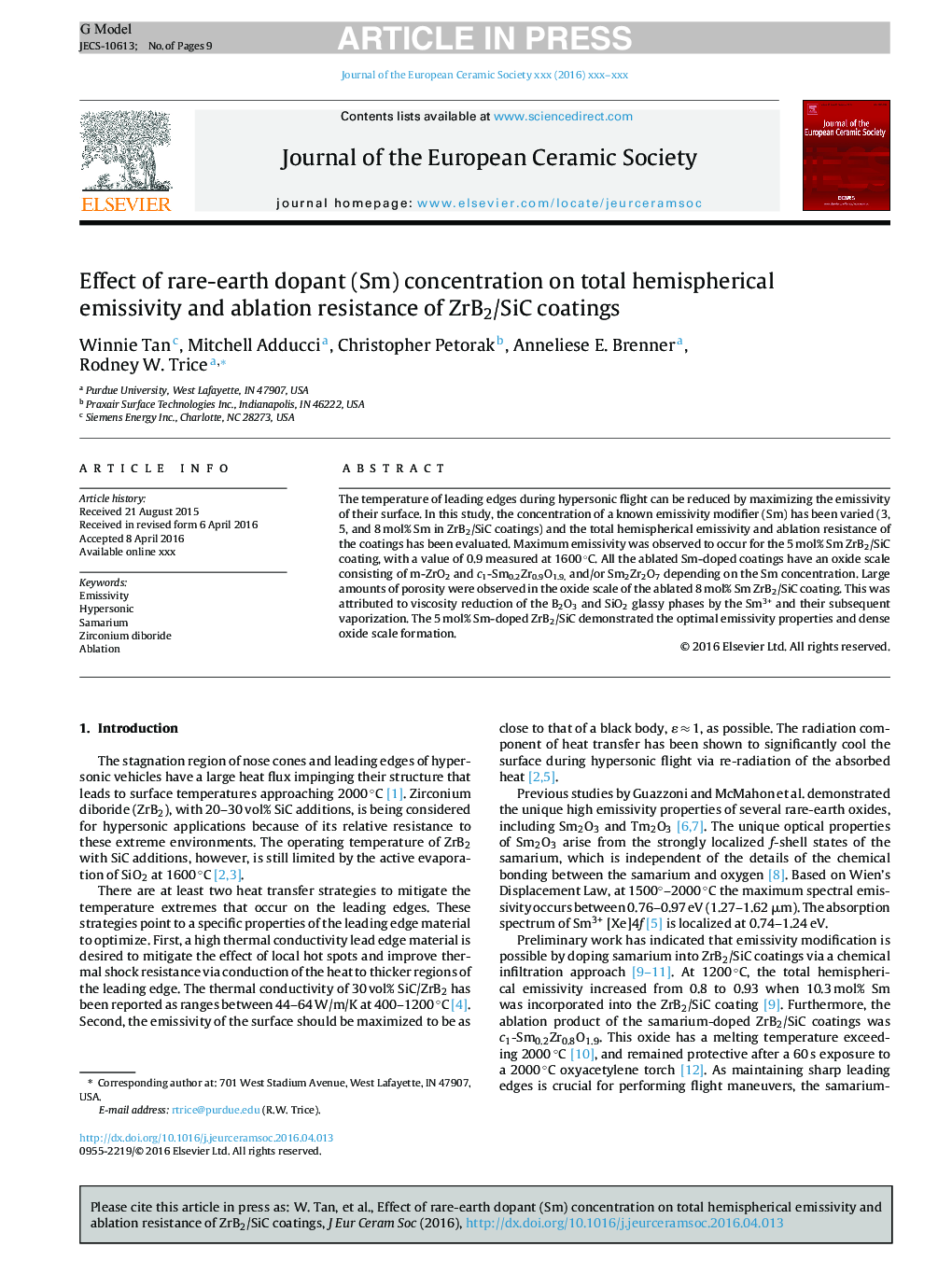| Article ID | Journal | Published Year | Pages | File Type |
|---|---|---|---|---|
| 5440773 | Journal of the European Ceramic Society | 2016 | 9 Pages |
Abstract
The temperature of leading edges during hypersonic flight can be reduced by maximizing the emissivity of their surface. In this study, the concentration of a known emissivity modifier (Sm) has been varied (3, 5, and 8 mol% Sm in ZrB2/SiC coatings) and the total hemispherical emissivity and ablation resistance of the coatings has been evaluated. Maximum emissivity was observed to occur for the 5 mol% Sm ZrB2/SiC coating, with a value of 0.9 measured at 1600 °C. All the ablated Sm-doped coatings have an oxide scale consisting of m-ZrO2 and c1-Sm0.2Zr0.9O1.9, and/or Sm2Zr2O7 depending on the Sm concentration. Large amounts of porosity were observed in the oxide scale of the ablated 8 mol% Sm ZrB2/SiC coating. This was attributed to viscosity reduction of the B2O3 and SiO2 glassy phases by the Sm3+ and their subsequent vaporization. The 5 mol% Sm-doped ZrB2/SiC demonstrated the optimal emissivity properties and dense oxide scale formation.
Related Topics
Physical Sciences and Engineering
Materials Science
Ceramics and Composites
Authors
Winnie Tan, Mitchell Adducci, Christopher Petorak, Brian Thompson, Anneliese E. Brenner, Rodney W. Trice,
